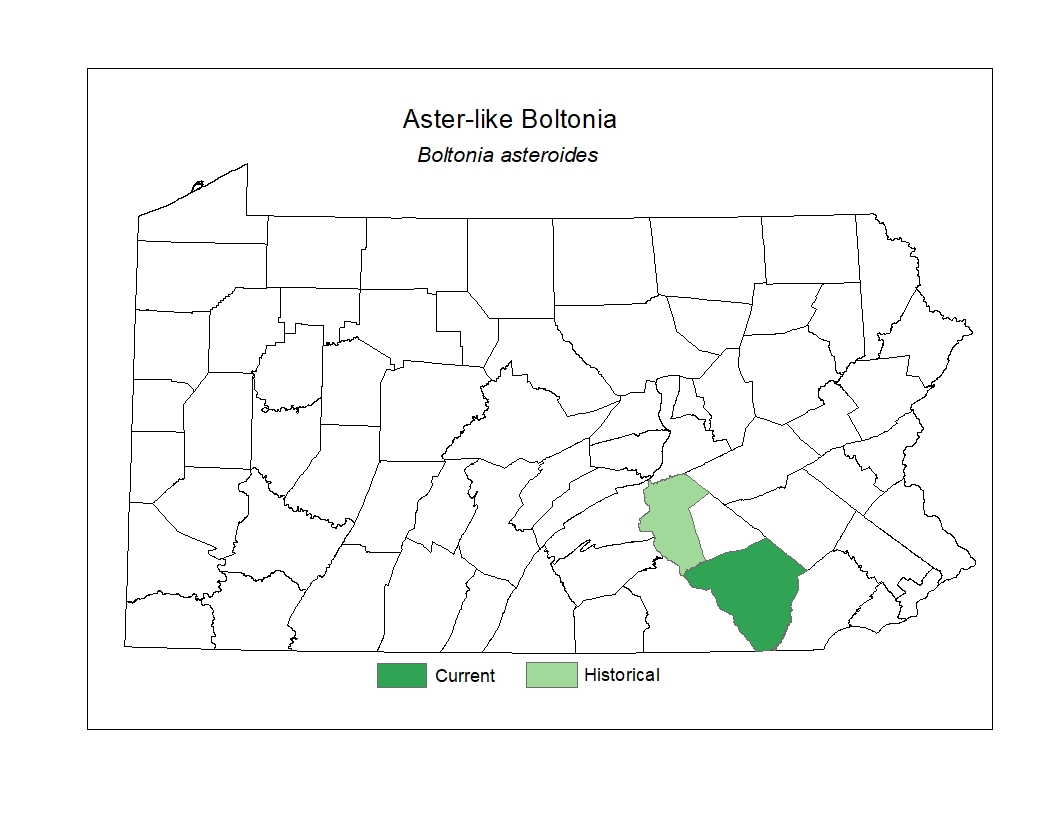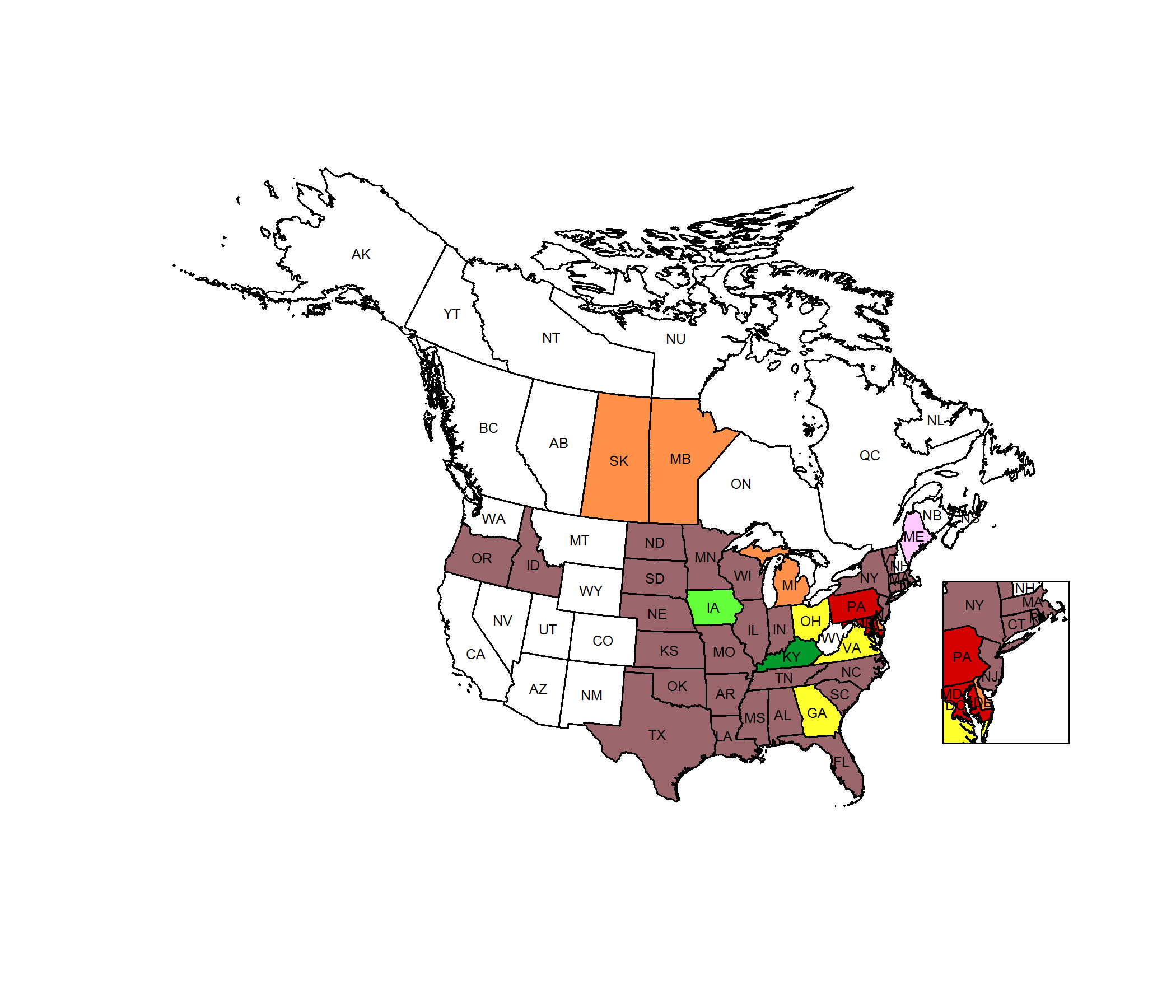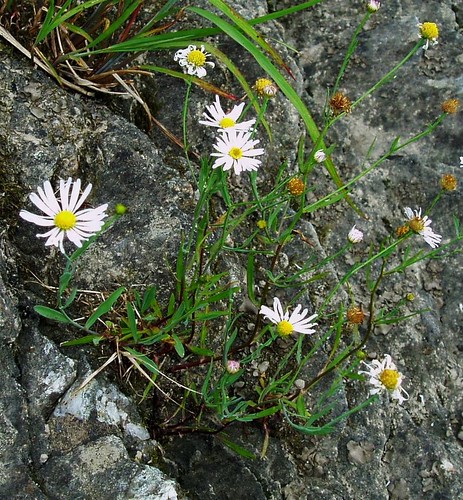 Species Factsheets
Species Factsheets
Boltonia asteroides
Aster-like Boltonia
State Status: Pennsylvania Endangered (PE)
PBS Status: Pennsylvania Endangered (PE)
Federal Status:
Global Rank: G5
![]() rank interpretation
rank interpretation
State Rank: S1
Did You Know?
Many insects are attracted to this plant including butterflies, long and short-tongued bees, wasps, flies, skippers, moths, and beetles.
Description
Aster-like boltonia (Boltonia asteroides) is a perennial herb with a hairless, often branched stem that can grow to about 1m tall. The leaves are alternately arranged, untoothed, hairless, broadly linear to lance-shaped, up to 15cm long, and tend to get smaller in size going up the stem. The flowers, appearing from July to October, consist of daisy-like flowering heads about 12mm wide with surrounding white or pinkish ray florets.
Rank Justification
Critically imperiled in the nation or state because of extreme rarity (often 5 or fewer occurrences) or because of some factor(s) such as very steep declines making it especially vulnerable to extirpation from the state.
PABS
The PA Biological Survey (PABS) considers the aster-like boltonia to be a species of special concern, based on the very few occurrences that have been recently confirmed and its very specialized habitat. It has a PA legal rarity status and a PABS suggested rarity status of Endangered.
Habitat
This species grows in open wet places, in Pennsylvania
particularly on open rocky shores and exposed river bed
outcrops, especially where annual scouring takes place.
Survey Dates
Flowers July - October
Distribution
In Pennsylvania, it has been documented historically along the lower Susquehanna River and also in Erie County.

Threats
Only a few populations along the lower Susquehanna River are currently known. Invasive species represent a threat to this species and its habitat.
Management
The viability of populations of aster-like boltonia and its habitat depends on maintaining the natural hydrology and natural condition of the shoreline and islands of the lower Susquehanna River. The species appears well-adapted to the seasonal fluctuations in water levels, especially the lower water levels of summer and fall when the plant is flowering and fruiting.
Conservation Status Map


NatureServe. 2017. NatureServe Explorer: An online encyclopedia of life [web application]. Version 7.1. NatureServe, Arlington, Virginia. Available https://explorer.natureserve.org.
https://www.prairiemoon.com/seeds/wildflowers-forbs/boltonia-asteroides-false-aster.html
- NatureServe. 2018. NatureServe Explorer: An online encyclopedia of life [web application]. Version 7.1. NatureServe, Arlington, Virginia. Available at https://www.natureserve.org/explorer
- Pennsylvania Natural Heritage Program. 2018.
- Rhoads, A.F. and W.M. Klein, Jr. 1993. The Vascular Flora of Pennsylvania. American Philosophical Society, Philadelphia, Pennsylvania. Rhoads, A.F. and T.A. Block.
- 2007. The Plants of Pennsylvania: An Illustrated Manual. 2nd edition. University of Pennsylvania Press, Philadelphia, Pennsylvania.







